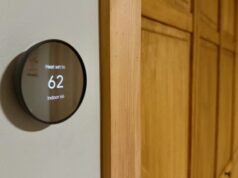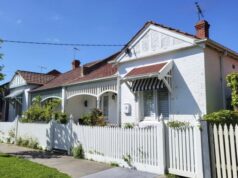
AAC is concrete that contains many tiny air bubbles, making it 20% of the weight of regular concrete. AAC is an excellent insulator, and can also be used as a structural material.

Image by Marco Bernardini, used under the CC BY-SA 3.0 license.
What is autoclaved aerated concrete (AAC)?
Autoclaved aerated concrete (AAC) is created using cement and/or lime, a fine sand such as quartz, water and a small amount of aluminium powder finely mixed together and poured into moulds. The addition of aluminium powder is important – this becomes the basis of several chemical reactions which help to form hydrogen gas in the mixture. As the concrete sets in its moulds, the gas foams inside it and sets, producing bubbles of hydrogen which escapes and is replaced by air.
Before the concrete has fully set though, it’s removed from its forms and placed in an autoclave – a type of oven that works through steam pressure. When the autoclave reaches a certain temperature and pressure, the quartz sand undergoes a chemical reaction which hardens the concrete even further.
The end result looks a little like an aerated chocolate bar, but it’s 20% of the weight of normal concrete and has excellent thermal and sound insulating properties.
How does AAC insulate against heat?
The bubbles inside AAC are what give it its thermal insulation qualities. Since air is a poor heat conductor, heat travelling through AAC is not passed along, effectively preventing it from reaching through to the other side. This, in combination with the thickness of the concrete block itself, as well as any other layers of added protection such as a brick or stucco façade makes for excellent thermal insulation.
How effective is AAC as thermal insulation?
AAC generally provides a very respectable R-value figure as a single layer of blocks, though obviously thicker blocks and any additional layers will add to the overall R value.
How much soundproofing does AAC provide?
The tiny air pockets in AAC also help to prevent sound transmission. The exact Rw values will depend on other factors like other layers or materials covering the AAC, but it is generally very effective at blocking low to mid-range frequencies, and can be further enhanced with the addition of added soundproofing. Care must be taken to ensure that all gaps are sealed properly, in order to block any passages sound may travel through.
How is AAC supplied and installed?
AAC comes in pre-prepared blocks which have been cut to measure, although if it’s necessary, AAC also works very well with hand-tooling. AAC blocks can be cut to size using standard saws – no additional specialist equipment is necessary. Because AAC is so easy to handle and lightweight to transport, it can be made to measure on-site and can be cut to whatever size is required. A dust mask is necessary when cutting AAC though, as breathable particles can cause health problems.
What does AAC cost?
AAC is cost effective for the material – since you won’t need any specialised installation, AAC can be sold and formed to measure when you need it as you need it. AAC forms the basis of a complete building material, and doesn’t require any additional insulation or framework.
Special considerations
AAC is fireproof, vermin-proof and rot proof. It won’t encourage mould or other fungi and it’s water resistant, even if not entirely water proof. AAC is susceptible to impact damage, but this can be dealt with to some extent by installing a sturdy façade.





